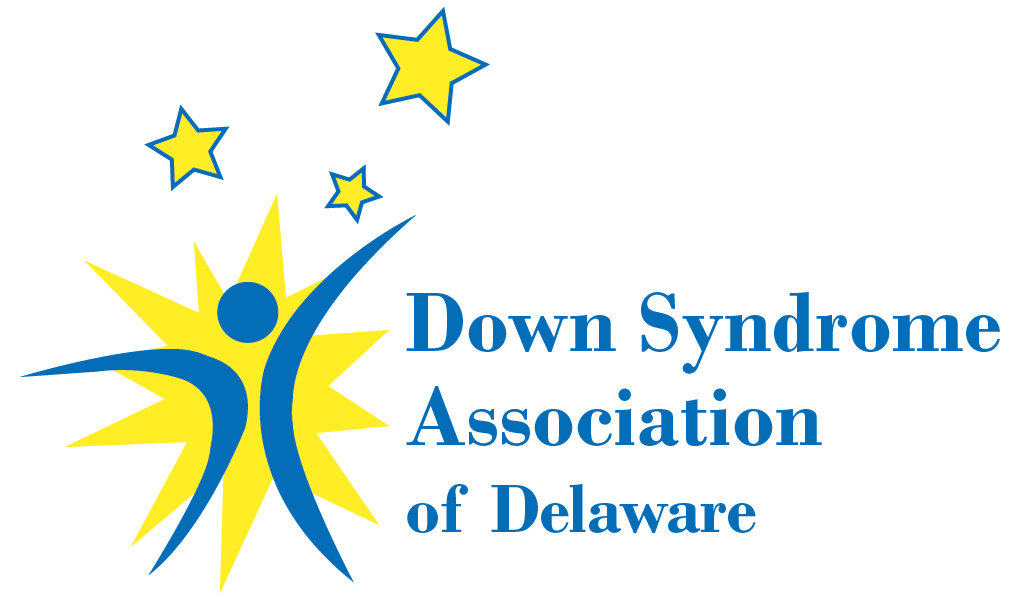Down syndrome is the most common and readily identifiable chromosomal variation. In every cell in the human body there is a nucleus, where genetic material is stored in genes. Genes carry the codes responsible for all of our inherited traits and are grouped along rod-like structures called chromosomes. Typically, the nucleus of each cell contains 23 pairs of chromosomes, half of which are inherited from each parent. Down syndrome occurs when an individual has a full or partial extra copy of chromosome 21 (Trisomy 21) resulting in 47 chromosomes instead of the usual 46. It occurs in approximately 1 in 690 live births. About 6,000 babies with Down syndrome are born in the United States each year.
Nothing that a parent did or did not do during the pregnancy causes a baby to have Down syndrome. While the age of the mother can be a factor, 80% of people with Down syndrome are born to parents under the age of 35, simply because women in that age group have the most babies. Down syndrome occurs evenly in male and female babies. People with Down syndrome carry more traits of their birth family than the traits of Down syndrome.
Just as in the typical population, there is a wide variation in mental abilities, behavior, and developmental progress in individuals with Down syndrome. Their level of intellectual disability may range from mild to severe, with the majority functioning in the mild to moderate range.
Each child with Down syndrome has his or her own talents and unique capacities, and it’s important to recognize these and reinforce them. In many ways, children who have Down syndrome are very much the same as other children. They have the same moods and emotions, and they like to learn new things, to play and enjoy life.
Our children have Dreams and they are More Alike than Different
Facts About Down Syndrome
- Down syndrome occurs when an individual has a full or partial extra copy of chromosome 21. This additional genetic material alters the course of development and causes the characteristics associated with Down syndrome.
- There are three types of Down syndrome: trisomy 21 (nondisjunction) accounts for 95% of cases, translocation accounts for about 4% and mosaicism accounts for about 1%.
- Down syndrome is the most commonly occurring chromosomal condition. One in every 691 babies in the United States is born with Down syndrome.
- There are more than 400,000 people living with Down syndrome in the United States.
- Down syndrome occurs in people of all races and economic levels.
- The incidence of births of children with Down syndrome increases with the age of the mother. But due to higher fertility rates in younger women, 80% of children with Down syndrome are born to women under 35 years of age.
- People with Down syndrome have an increased risk for certain medical conditions such as congenital heart defects, respiratory and hearing problems, Alzheimer’s disease, childhood leukemia, and thyroid conditions. Many of these conditions are now treatable, so most people with Down syndrome lead healthy lives.
- A few of the common physical traits of Down syndrome are low muscle tone, small stature, an upward slant to the eyes, and a single deep crease across the center of the palm. Every person with Down syndrome is a unique individual and may possess these characteristics to different degrees or not at all.
- Life expectancy for people with Down syndrome has increased dramatically in recent decades – from 25 in 1983 to 60 today.
- People with Down syndrome attend school, work, participate in decisions that affect them, and contribute to society in many wonderful ways.
- All people with Down syndrome experience cognitive delays, but the effect is usually mild to moderate and is not indicative of the many strengths and talents that each individual possesses.
- Quality educational programs, a stimulating home environment, good health care, and positive support from family, friends and the community enable people with Down syndrome to develop their full potential and lead fulfilling lives.
Language Guidelines
- People with Down syndrome should always be referred to as people first. Instead of “a Down syndrome child,” it should be “a child with Down syndrome.” Also avoid “Down’s child” and describing the condition as “Down’s,” as in, “He has Down’s.”
- Down syndrome is a condition or a syndrome, not a disease.
- People “have” Down syndrome, they do not “suffer from” it and are not “afflicted by” it.
- Down vs. Down’s – While Down syndrome is listed in many dictionaries with both popular spellings (with or without an apostrophe s), the preferred usage in the United States is Down syndrome. This is because an “apostrophe s” connotes ownership or possession. Down syndrome is named for the English physician John Langdon Down, who characterized the condition, but did not have it. The AP Stylebook recommends using “Down syndrome,” as well.
- While it is still clinically acceptable to say “mental retardation,” you should use the more socially acceptable “intellectual disability” or “cognitive disability.” The Down syndrome community, as well as other disability organizations, strongly condemns the use of the word “retarded” in any derogatory context. Using this word is hurtful and suggests that people with disabilities are not competent.
Publications

